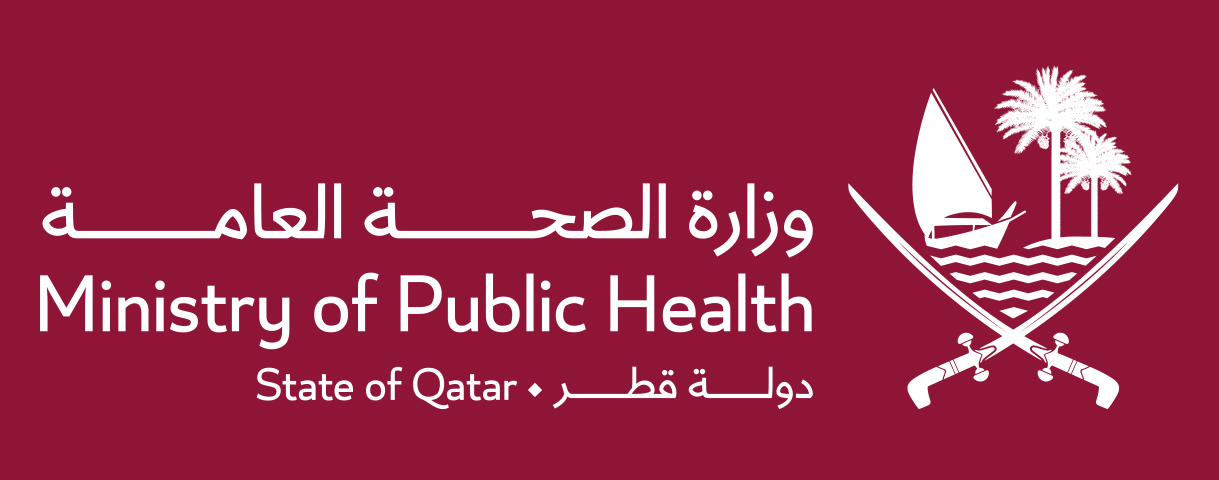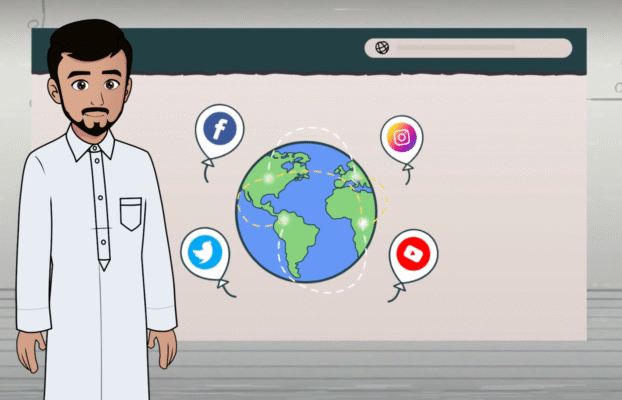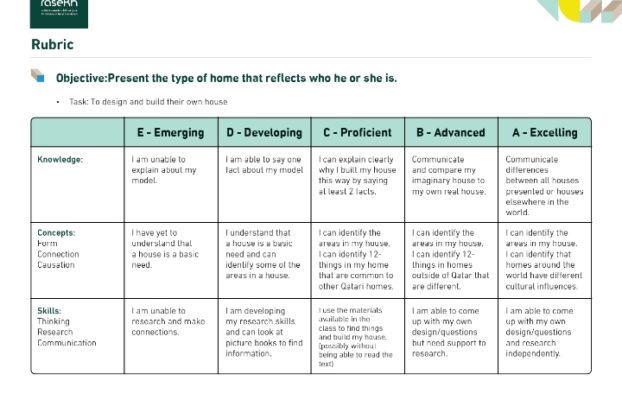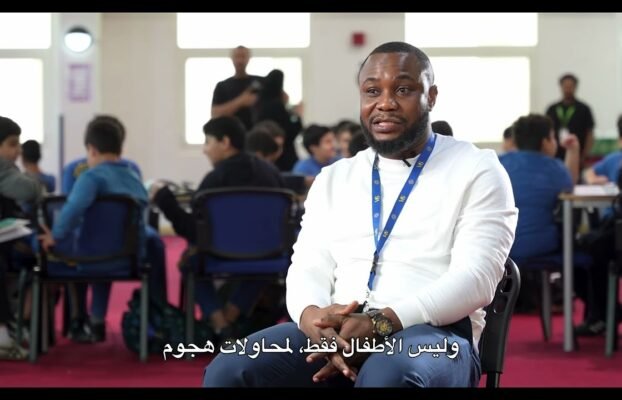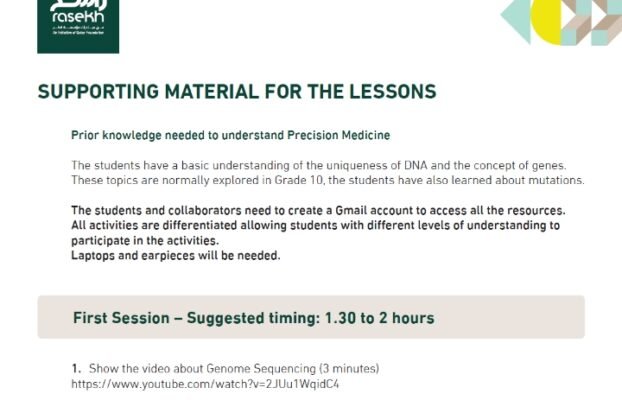Eye Health
Healthy Eyes
-
Precision Health
QNV 2030: Human Development
-
Resource Plan
-
SDG 3: Good Health and Well-Being
-
9 - 10 years
-
Language(s), Science
-
Resource ID: 15472
- Share Feedback Embed Resource

Overarching Goal(s)
- To equip learners with the knowledge, skills, motivation and understanding to demonstrate the importance of Glocalization as a sustainable model for learning.
- To inspire students to act sustainably from both local and global perspectives.
Learning Outcomes
- Learners describe, explain, and interpret the characteristics, structures and interactions of a theme, group, project, or organization related to glocalization.
- Learners discuss, plan, and evaluate learner-initiated-action in a sustainable way.
- Learners develop lifelong skills which support their sustainable actions.
- Learners reflect on the impact of their actions and demonstrate their understanding of the action as related to sustainability.
Possible Duration (Hours)
6-7 hours
Qatar National Vision 2030 Connection
The teacher will ask students to investigate how the SDG 3 and the Qatar National Vision 2030 can provide us with good health and wellbeing. How is the Ministry of Public Health implementing the Qatar National Vision 2030 pillar to sustain good health and well-being? Which pillar is this?
English: https://www.gco.gov.qa/en/about-qatar/national-vision2030/
Arabic: https://www.gco.gov.qa/ar/about-qatar/national-vision2030/
Source: Government Communications Office (2023). Qatar National Vision 2030. [online] Government Communications Office. Available at: https://www.gco.gov.qa/en/about-qatar/national-vision2030/
Sustainable Development Goals (SDGs) Connection
SDG 3: Good Health and Well-being: The lesson will have aspects of promoting and raising awareness to sustain good health and wellbeing.
The 17 Sustainable Development Goals, United Nations
English: https://sdgs.un.org/goals
Arabic: https://sdgs.un.org/ar/goals
Source: United Nations (2024). The 17 Sustainable Development Goals. [online] United Nations. Available at: https://sdgs.un.org/goals
Action Learning Outcomes
- Learners discuss, evaluate, and plan student-initiated activities.
- Learners become more aware of their own strengths and areas for growth.
- Learners undertake challenges that develop new skills.
- Learners persevere in action.
- Learners consider the ethical implications of their actions.
Content
The content of the lesson tool revolves around identifying and understanding the significance of the role of the eye by exploring the human eye anatomy and taking steps to minimize eye strain from excessive use of computers/screens/technology that sustains good health and well-being.
Resource Utilization and Identification: Ministry of Public Health (MoPH)
Subject Matter: Making connections with global health, benefits of taking breaks during long periods of using computers. Understanding the human eye anatomy and the importance of taking care of the eyes.
Glocalization Connections: Connect the need for sufficient breaks from long use on computers/screens, and distances using technology.
Differentiation: Word bank to support middle and lower ability students.
Critical Thinking: Encourage students to analyze health tips and how this could impact our daily lives as students.
Real-world Application: Discuss and explain how understanding that long use on computers or screen could have temporary effects, for example headaches, blurred vision, or eye problems.
Strategies
The strategies employed in this lesson tool are designed to foster analyzing, critical thinking, inquiry, collaboration, and innovative engagement. They include visible thinking routines, responsive pedagogy, and problem-solving approaches to adapt to students’ needs and encourage active participation. Students apply meaningful learning experiences that connect to sustainable measures in making sensible health choices.
Responsive and Adaptive Pedagogy: Adjust the pace and level of guidance based on student responses and engagement, considering the impact of eye strain and long periods on computers.
Visible Thinking Routines: Implement the “K-W-L” visible chart to stimulate critical thinking and discussion. Encourage students to utilize what they already know, and what they want to find out more about and what they learned.
Inquiry: Encourage students to inquire about the camels’ cultural significance on their desert and the significance of their eyelashes protecting their eyes for fostering a sense of curiosity, inquiry and exploration.
Collaboration: Facilitate peer reviews and feedback where students can share and compare their findings, promoting collaboration and the exchange of perspectives.
Assessment for and as Learning: Use formative assessments during their responses, quizzes and peer feedback.
Problem-Solving: Ask students to identify and propose solutions to challenges related to screen time and long periods on computers.
Learning Experiences
Learning Engagement 1: Understanding the structure and parts of healthy eyes.
Learning Objective: To understand the structure and parts of healthy eyes.
Introduction and context setting
Students will use the ‘K-W-L’ chart in their notebooks. Students use this process to activate prior knowledge, develop a purpose for learning and summarize their learning.
Know –What do I know about sustaining healthy eyes?
Do I know the different parts and purpose of eyes?
What I want to know – What do I want to know about sustaining healthy eyes?
What do I think the different parts of the eye are called?
Learned (What I learned)
What do I want to learn about sustaining healthy eyes?
What do I want to learn about a part(s) of the eye?
Resource 1: K-W-L chart – Exploring the eye: https://rasekh.qa/wp-content/uploads/2024/10/Resource-1_-Exploring-the-eye.pdf
Instructions for teachers
The teacher will provide Resource 1 to students and they will complete as much as possible. They will come back to the learned column at the end of the lesson to complete.
Resource 2: Investigating parts of an eye: https://rasekh.qa/wp-content/uploads/2024/10/RESOURCE-2_-INVESTIGATING-THE-EYE.pdf
Resource 3a/b: Labeling the eye: https://rasekh.qa/wp-content/uploads/2024/10/RESOURCE-3a_-LABELING-THE-EYE.pdf
https://rasekh.qa/wp-content/uploads/2024/10/RESOURCE-3b_-LABELING-THE-EYE-with-word-bank.pdf
Instructions for teachers
The teacher will go through Resource 2 with students, then they will provide Resource 3a for the higher ability students, and Resource 3b for the middle and lower ability students that contains word banks to support them. The teacher can provide the link for the resource to complete on the resource sheet, or record responses in their notebooks. There is a question to think about at the end on the resource.
Instructions for students
Students will label the learned different parts of the eye and attempt to answer the question at the end. After, they will share their responses as a class discussion.
Note for the teacher: check for understanding in response to the question: that camels’ eyelashes protect their eyes from the desert sand.
Student friendly questions:
What part of the eye do you think we use the most?
Why do some people need to wear glasses? What do some people wear other than glasses to help them with their vision?
What happens to our eyes when we sleep? Do they still move? What is this called?
Why is it essential to make sure we rest our eyes?
What enables us to see when we look at an object? What enters through the cornea? (light is reflected from the object into our eyes).
Peer reviews
Students will pair up with another student to review their responses. They will discuss what they found interesting and compare their responses; explain why they thought this? What was interesting to know? Then they will go back to their K-W-L chart to add in what they learned.
Learning Engagement 2: Taking care of eye health
Resource 4: Health Tips and Ideas for Eye Strain – Ministry of Public Health resource in English: https://www.moph.gov.qa/english/mediacenter/HealthTips/Pages/HealthTipsDetails.aspx?ItemId=38
In Arabic: https://www.moph.gov.qa/arabic/mediacenter/HealthTips/Pages/HealthTipsDetails.aspx?ItemId=38
Learning Objective:
Students will: Understand the importance of taking care of eye health and to monitor eye strain.
Instructions for teachers:
Students will be provided with the Resource 4 link and students will have time to read, analyze and take notes in their student journals using their own words. They can include illustrations with captions too. After, students will be instructed to create a quiz of no less than nine questions for their peer(s) to answer.
Instructions for students:
Students will read and analyze the Resource 4 link and take notes in their reflection journals. They should write at least a paragraph to explain what they read using their own words. They can add illustrations with captions. Then they will create a quiz containing at least 9 questions from the read information for their peer(s) to answer.
Student friendly questions:
What are some of the main risk factors for developing temporary vision or eye problems through computers?
Hypermetropia is the presence of refractive errors. Research and explain what this means.
How is using computers in the workplace similar/different to students using computers in the classroom?
What is the longest time you have taken on a computer?
What tip is recommended after using a computer for 20 minutes?
What are some common symptoms related to using computers for long periods?
What is the distance that is recommended between your eyes and the screen?
Peer Quiz Time/Feedback
Students will work in pairs to answer each other’s quizzes. After the quiz, they will reflect on any difficulties with the quiz, was it pertinent to the information and was it easy to follow? Students will be encouraged to suggest appropriate recommendations using a different colored pen.
Action plan
Students will come up with an action plan that helps them to avoid excessive eye strain using the health tips they learned.
Checking for Understanding
Learning Engagement 1: Understanding the structure and parts of healthy eyes.
Check student’s understanding from responses from Resource 1; 3a/3b.
Learning Engagement 2: Taking care of eye health
Check student’s understanding from their reflection journals, quizzes, and peer feedback.
Differentiation
Word bank for the middle-low ability students provided.
Key Vocabulary
anterior chamber, cornea, eye(s), eyelashes, eyelid, eye strain, excessive, healthy, hypermetropia, iris, lacrimal duct, lens, optic nerve, pupil, refractive error, retina, retinal blood vessels, sclera, sustaining, vitreous body
Resources
Resource 1: K-W-L Chart – Exploring the eye: https://rasekh.qa/wp-content/uploads/2024/10/Resource-1_-Exploring-the-eye.pdf
Resource 2: Investigating parts of an eye: https://rasekh.qa/wp-content/uploads/2024/10/RESOURCE-2_-INVESTIGATING-THE-EYE.pdf
Resource 3a/b: Labeling the eye: https://rasekh.qa/wp-content/uploads/2024/10/RESOURCE-3a_-LABELING-THE-EYE.pdf
https://rasekh.qa/wp-content/uploads/2024/10/RESOURCE-3b_-LABELING-THE-EYE-with-word-bank.pdf
Resource 4: Health Tips and Ideas for Eye Strain – Ministry of Public Health resource:
In English: https://www.moph.gov.qa/english/mediacenter/HealthTips/Pages/HealthTipsDetails.aspx?ItemId=38
In Arabic: https://www.moph.gov.qa/arabic/mediacenter/HealthTips/Pages/HealthTipsDetails.aspx?ItemId=38
Resource Publisher
Ministry of Public Health
The Ministry of Public Health is the supreme authority concerned with health affairs in Qatar. We believe in our ability to build a health system that provides advanced health care according to the highest standards.
